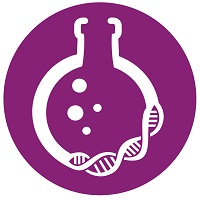Bioanalytics
Symposium: Oligo Bioanalysis, Platforms and Methods
Comparison of Bioanalytical Assay Platforms for Oligonucleotide Quantitation
Wednesday, November 12, 2025
9:00 AM - 9:30 AM CT
Location: 221 AB

Karan Agrawal, PhD (he/him/his)
Principal Scientist
Johnson & Johnson
Spring House, Pennsylvania
Speaker(s)
Oligonucleotide therapeutics can be quantified using various bioanalytical methods, and while the relative advantages and disadvantages of these workflows have been extensively reviewed, for the most part they do not evaluate multiple assay platforms developed for the same analyte. As a result, it is difficult to identify the extent to which assays differ due to factors inherent to the assay platform versus factors inherent to the compound being analyzed, leading to a potentially non-representative comparison.
In the most recent comprehensive evaluation of an oligonucleotide therapeutic, a 21-mer lipid conjugated siRNA was analyzed by solid phase extraction LC-MS (SPE-LC-MS), hybrid LC-MS, ligand-binding assay (LBA) and stem-loop reverse transcription-qPCR (SL-RT-qPCR) [1]. That study found that hybrid LC-MS and SL-RT-qPCR were almost an order of magnitude more sensitive than LBA or SPE-LC-MS, LBA and SL-RT-qPCR had the highest throughput, and that while all techniques provided comparable pharmacokinetic data for the same set of incurred samples, the non-LC-MS workflows demonstrated generally higher concentrations, which could be due to their lack of specificity in including metabolite concentrations along with the parent siRNA. However, the concern remains as to how generalizable these results are for other oligonucleotide therapeutics. For example, an evaluation of the same 13-mer antisense oligonucleotide (ASO) by hybrid LC-MS and LBA showed no differences in sensitivity or incurred sample concentration [2]. Furthermore, the 21-mer siRNA study did not reveal the sequence of the therapeutic or capture probes due to the proprietary nature of the therapeutic, which makes reproducing their findings more difficult.
The present study compares three forms of oligonucleotide therapeutics – an ASO (Fomivirsen), a GalNAc-conjugated siRNA (Lumasiran), and a phosphorodiamidate morpholino oligomer (PMO) (Viltolarsen) by hybrid LC-MS, ligand-binding assays (LBA), and polymerase chain reaction (PCR) assays. For each therapeutic and platform, methods were developed and qualified, and spiked samples containing either the parent therapeutic only, a metabolite only, or a combination of the parent therapeutic and its metabolite were analyzed. For each analyte type, all assay platforms demonstrated acceptable assay performance and provided comparable data for the study samples. Only the LC-MS assay was consistently capable of distinguishing between the parent therapeutic and its metabolites, consistent with the expected high specificity of this platform. The non-LC-MS assays generally demonstrated higher sensitivity and throughput compared to the LC-MS workflows. Therefore, it appears that each assay platform evaluated is suitable for oligonucleotide bioanalysis, and the ultimate choice of methodology will depend on which factors among sensitivity, specificity and throughput need to be prioritized. Overall, this presentation aims to provide a comprehensive comparison of bioanalytical workflows for the rapidly-evolving field of oligonucleotide therapeutics, and assist the audience in making informed decisions about which assay platform would be most appropriate for each stage of the drug development process.
This presentation is intended to be part of a comprehensive session describing the major findings of a ring trial organized by the AAPS Oligonucleotide Bioanalysis Discussion Group.
References
[1] Agrawal K, et al. Bioanalysis 2024. doi: 10.1080/17576180.2024.2350266.
[2] Dillen L, et al. Bioanalysis 2017. doi: 10.4155/bio-2017-0145.
In the most recent comprehensive evaluation of an oligonucleotide therapeutic, a 21-mer lipid conjugated siRNA was analyzed by solid phase extraction LC-MS (SPE-LC-MS), hybrid LC-MS, ligand-binding assay (LBA) and stem-loop reverse transcription-qPCR (SL-RT-qPCR) [1]. That study found that hybrid LC-MS and SL-RT-qPCR were almost an order of magnitude more sensitive than LBA or SPE-LC-MS, LBA and SL-RT-qPCR had the highest throughput, and that while all techniques provided comparable pharmacokinetic data for the same set of incurred samples, the non-LC-MS workflows demonstrated generally higher concentrations, which could be due to their lack of specificity in including metabolite concentrations along with the parent siRNA. However, the concern remains as to how generalizable these results are for other oligonucleotide therapeutics. For example, an evaluation of the same 13-mer antisense oligonucleotide (ASO) by hybrid LC-MS and LBA showed no differences in sensitivity or incurred sample concentration [2]. Furthermore, the 21-mer siRNA study did not reveal the sequence of the therapeutic or capture probes due to the proprietary nature of the therapeutic, which makes reproducing their findings more difficult.
The present study compares three forms of oligonucleotide therapeutics – an ASO (Fomivirsen), a GalNAc-conjugated siRNA (Lumasiran), and a phosphorodiamidate morpholino oligomer (PMO) (Viltolarsen) by hybrid LC-MS, ligand-binding assays (LBA), and polymerase chain reaction (PCR) assays. For each therapeutic and platform, methods were developed and qualified, and spiked samples containing either the parent therapeutic only, a metabolite only, or a combination of the parent therapeutic and its metabolite were analyzed. For each analyte type, all assay platforms demonstrated acceptable assay performance and provided comparable data for the study samples. Only the LC-MS assay was consistently capable of distinguishing between the parent therapeutic and its metabolites, consistent with the expected high specificity of this platform. The non-LC-MS assays generally demonstrated higher sensitivity and throughput compared to the LC-MS workflows. Therefore, it appears that each assay platform evaluated is suitable for oligonucleotide bioanalysis, and the ultimate choice of methodology will depend on which factors among sensitivity, specificity and throughput need to be prioritized. Overall, this presentation aims to provide a comprehensive comparison of bioanalytical workflows for the rapidly-evolving field of oligonucleotide therapeutics, and assist the audience in making informed decisions about which assay platform would be most appropriate for each stage of the drug development process.
This presentation is intended to be part of a comprehensive session describing the major findings of a ring trial organized by the AAPS Oligonucleotide Bioanalysis Discussion Group.
References
[1] Agrawal K, et al. Bioanalysis 2024. doi: 10.1080/17576180.2024.2350266.
[2] Dillen L, et al. Bioanalysis 2017. doi: 10.4155/bio-2017-0145.
Learning Objectives:
- Upon completion, participants will be able to recognize the strengths and limitations of common oligonucleotide bioanalytical assays.
- Upon completion, participants will be able to appreciate how different oligonucleotide therapeutics respond to bioanalysis by the same assay platform.
- Upon completion, participants will be able to understand the appropriate use of these workflows during drug discovery and development.

